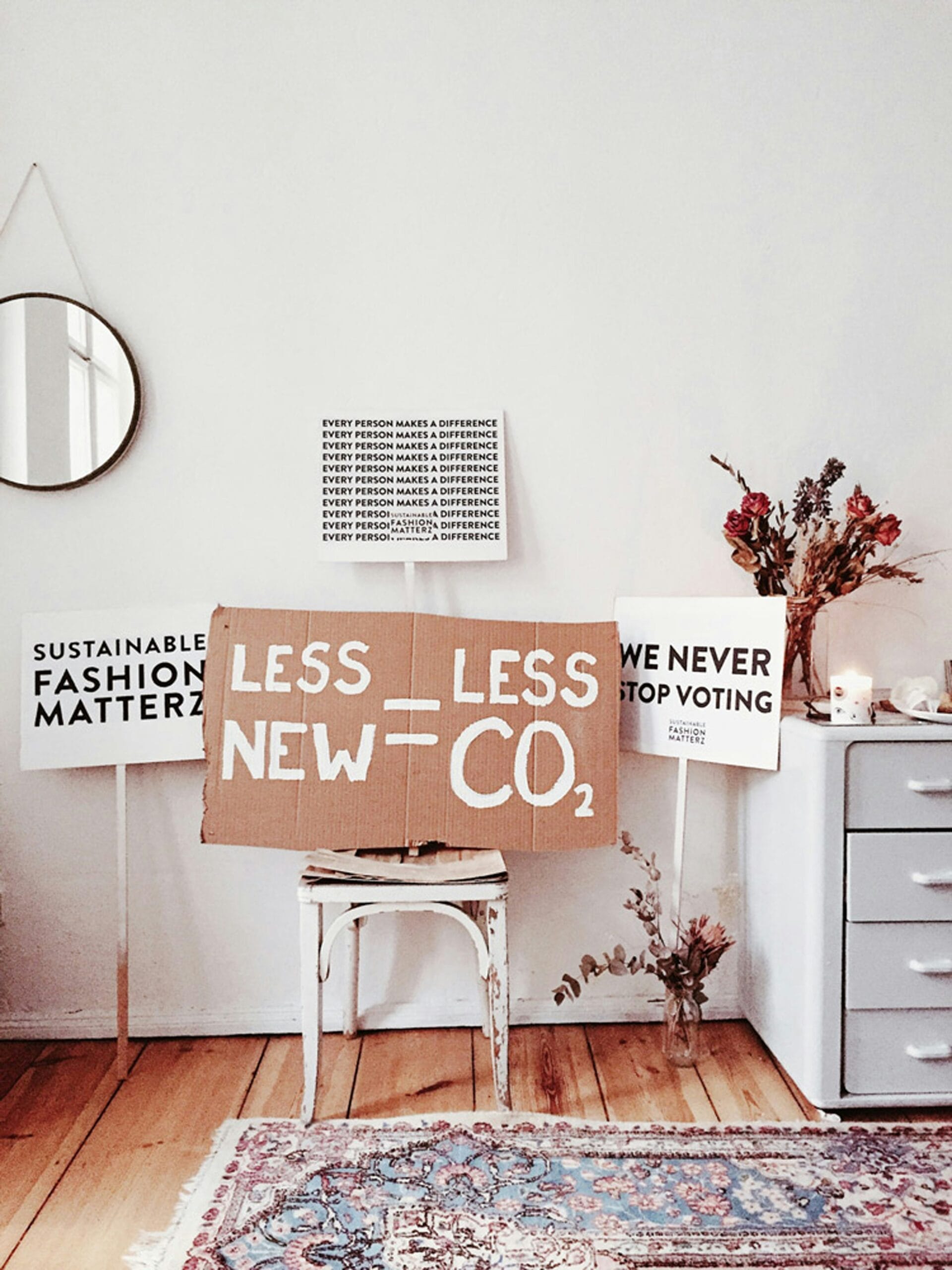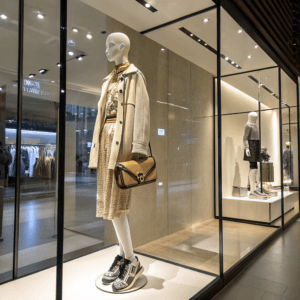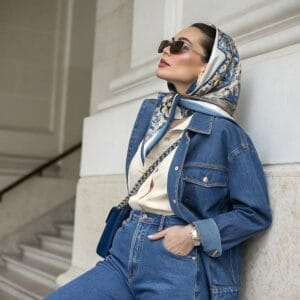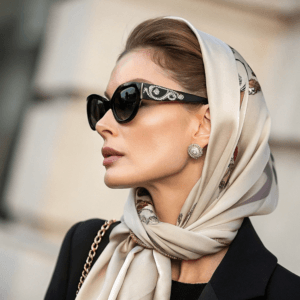Key Global Fashion Trends in January 2025
As we usher in January 2025, the global fashion landscape is undergoing significant transformations, influenced by various factors such as sustainability, technological advancements, and nostalgia. Among the most prominent trends is the remarkable rise of sustainability and circular fashion, which has garnered heightened attention in recent years. Eco-conscious consumers are increasingly favoring brands that prioritize environmentally-friendly practices and materials. This shift has led to the adoption of organic textiles and innovative recycling initiatives designed to reduce waste and promote a circular economy within the fashion industry.
In addition to eco-friendliness, there is a noticeable resurgence of vintage and retro styles. The influence of nostalgia can be seen in various collections that hark back to fashion trends from the past decades. Designers have begun remixing classic silhouettes and prints, creating modern interpretations that resonate with contemporary consumers. This trend reflects a broader cultural yearning for familiarity and comfort, which can be particularly appealing during uncertain times. As vintage clothing gains popularity, it has also spawned a thriving second-hand market, enabling consumers to embrace fashion history while reducing their environmental footprint.
Furthermore, technology plays a crucial role in shaping the fashion landscape of January 2025. The integration of artificial intelligence (AI) in the design process is paving the way for unprecedented innovation, enabling designers to analyze consumer behavior and preferences in real time. This data-driven approach allows for the creation of personalized fashion experiences, addressing the growing demand for individuality among consumers. As textile technologies advance, new materials are being developed that not only elevate the aesthetic appeal of fashion but also align with sustainable practices. Overall, these key trends reflect a dynamic fashion environment poised to address the concerns and desires of modern consumers effectively.
Innovations in Design and Materials
The fashion industry is witnessing a remarkable transformation, driven by innovations in design and materials. At the forefront of this evolution are bio-fabrics, which offer a sustainable alternative to conventional textiles. Derived from organic sources such as algae, mushrooms, and even agricultural waste, these fabrics not only reduce the environmental impact associated with traditional textile production but also provide new opportunities for creativity in fashion design. The incorporation of bio-fabrics in collections from renowned designers illustrates a growing commitment to eco-friendly practices while meeting the demands of a conscious consumer base.
Another significant advancement in the realm of fashion is the rise of smart textiles. These innovative materials possess the ability to sense and respond to environmental changes, incorporating advanced technology into wearable items. For instance, garments equipped with sensors can monitor physiological indicators such as temperature or heart rate, creating a personalized wear experience. This trend harmonizes with the modern consumer’s desire for multifunctionality and practicality in their wardrobe. Fashion brands in Turkey and France are embracing smart textiles, merging style with technology to appeal to the tech-savvy millennial and Gen Z audiences.
Furthermore, the revolutionary impact of 3D printing on traditional apparel manufacturing cannot be overstated. This technology empowers designers to create intricate patterns and customized pieces with unprecedented precision and speed. As a result, the fashion industry is witnessing a shift towards on-demand production, which significantly minimizes waste and excess inventory. The ability to produce unique items tailored to individual preferences reflects a broader trend in personalization across the market. Through these innovations—bio-fabrics, smart textiles, and 3D printing—the fashion landscape is evolving, driving sustainability and enabling creative expressions in an ever-changing world.
Cultural and Social Influences in Fashion
The fashion industry is continuously transforming in response to shifting cultural and social dynamics, with January 2025 marking a pivotal moment in this evolution. One of the most significant changes lies in the growing acceptance and demand for diversity and inclusivity within fashion. This shift reflects a broader societal recognition of the importance of representation, with brands increasingly striving to showcase a diverse range of models across various campaigns. This inclusive approach not only resonates with consumers but also fosters a sense of belonging, aligning with contemporary values that prioritize authenticity and equity.
Additionally, the acceptance of gender-neutral designs has gained substantial momentum. Fashion labels in Turkey and France, among others, are now incorporating unisex collections that cater to consumers regardless of their gender identity. This trend toward gender inclusivity challenges traditional notions of fashion, presenting a more fluid interpretation of style that transcends the binary gender norm. As more brands embrace this forward-thinking approach, they also contribute to the dismantling of outdated stereotypes, inviting consumers to express themselves freely.
Social media plays an instrumental role in shaping these cultural shifts. Platforms like Instagram and TikTok have become vital tools for fashion brands to connect with their audiences and promote progressive narratives. Influencers and everyday users alike are celebrated for their unique personal styles, leading to a democratization of fashion that empowers individuals to curate their identities. Through cultural appreciation and awareness, fashion trends arising from various influences gain traction, resulting in a rich tapestry of styles that reflect the complexities of contemporary society.
In conclusion, the landscape of fashion in January 2025 is profoundly impacted by cultural and social influences. By embracing diversity, inclusivity, and the power of social media, the fashion industry is transforming in ways that resonate deeply with modern consumers, ultimately leading to a more representative and dynamic market.
Consumer Behavior and Market Shifts
The landscape of fashion is continually evolving, particularly as consumer expectations shift towards greater transparency and ethical practices. Today’s consumers are increasingly discerning, seeking brands that prioritize sustainable practices and offer insights into their supply chains. This trend is evident in the rising popularity of second-hand and rental markets, which provide eco-friendly alternatives to traditional retail models. As citizens become more aware of the environmental impact of fast fashion, they are opting for choices that minimize waste and promote sustainability.
Economic pressures, exacerbated by global challenges, have influenced consumer behavior significantly. Individuals are more inclined to tighten their budgets, leading to a marked increase in the market for second-hand garments and fashion rentals. This shift signifies a move away from the impulsive purchasing often associated with mainstream fashion in favor of more mindful consumption. The availability of platforms dedicated to pre-loved apparel allows consumers to access trendy clothing at a fraction of the cost, making it an attractive option.
In light of these changes, the future of fashion in 2025 appears to be focused on innovation that aligns with consumer values. Understanding and addressing the demand for accountability in sourcing practices is essential for brands to remain competitive in an increasingly crowded market. Moreover, as luxury continues to intersect with sustainability, fashion houses in countries like Turkey and France are experimenting with novel textiles that ensure both quality and reduced environmental impact.
While there will undoubtedly be challenges, such as managing supply chain logistics and integrating sustainable practices across all levels of production, the opportunities for innovation are vast. In conclusion, as consumers place greater importance on transparency, ethical considerations are set to reshape the fashion industry dramatically. This paradigm shift will create a dynamic landscape ripe for creative solutions and sustainable practices, ensuring that the fashion of 2025 is reflective of evolving consumer values.








